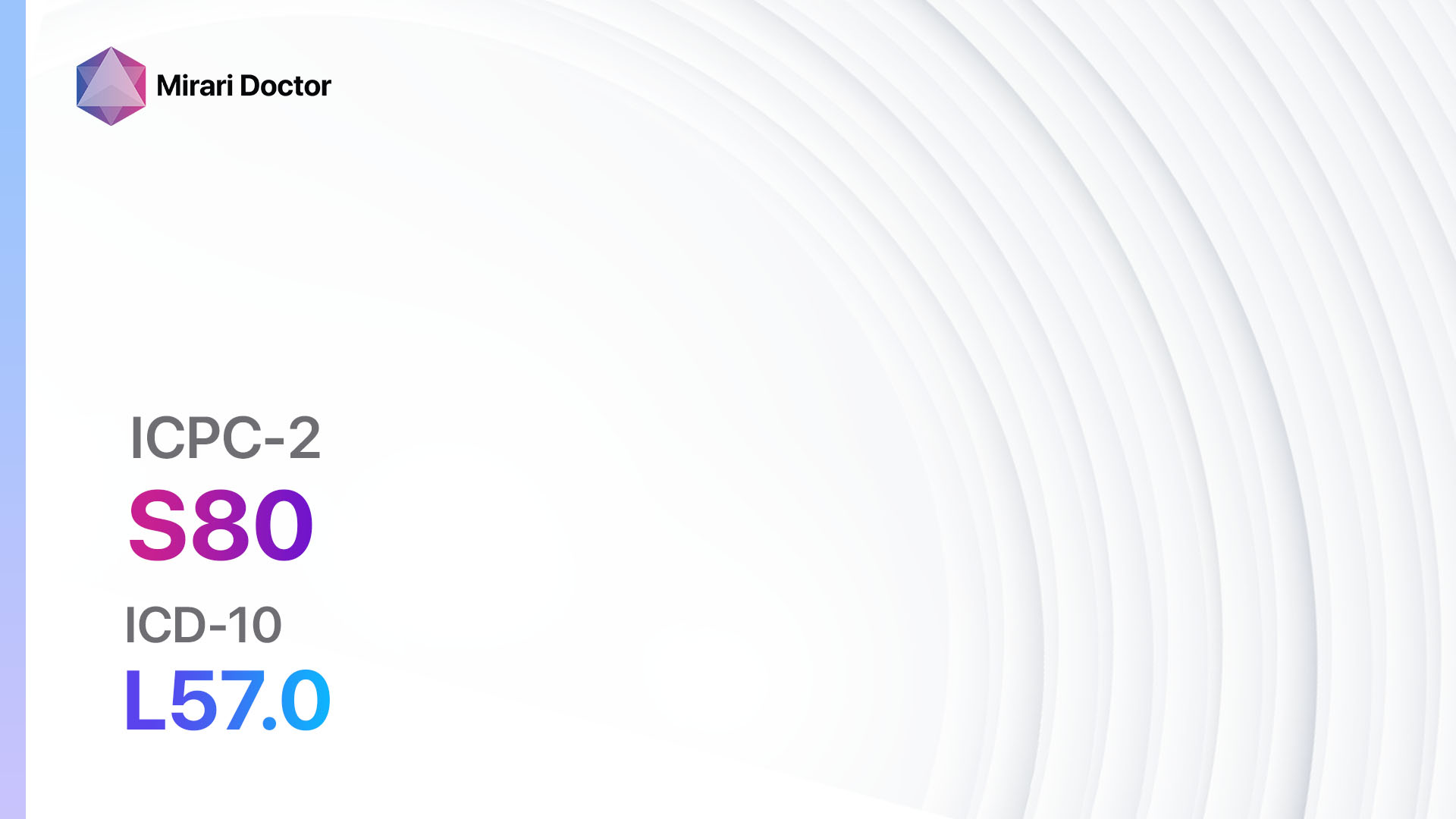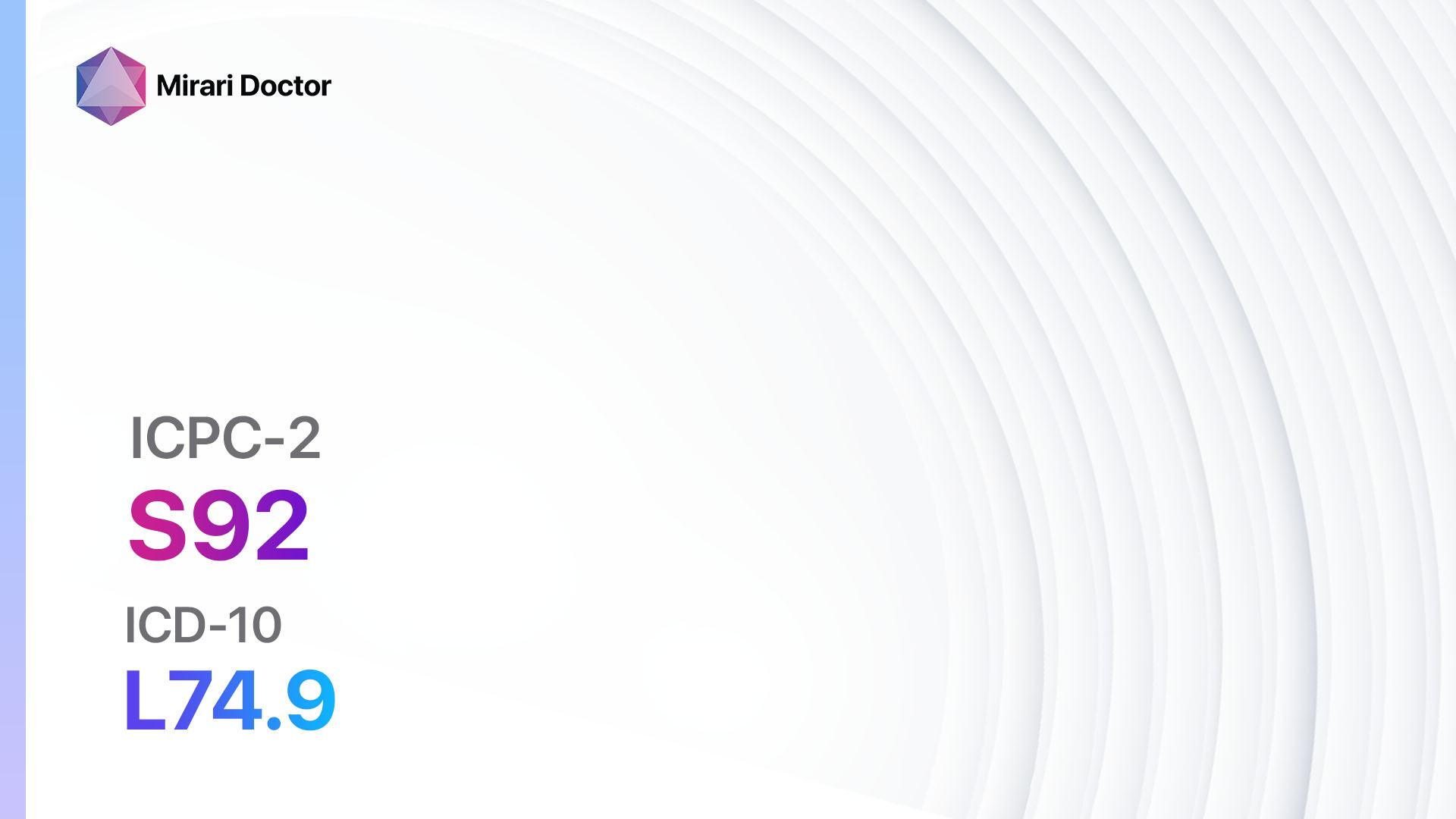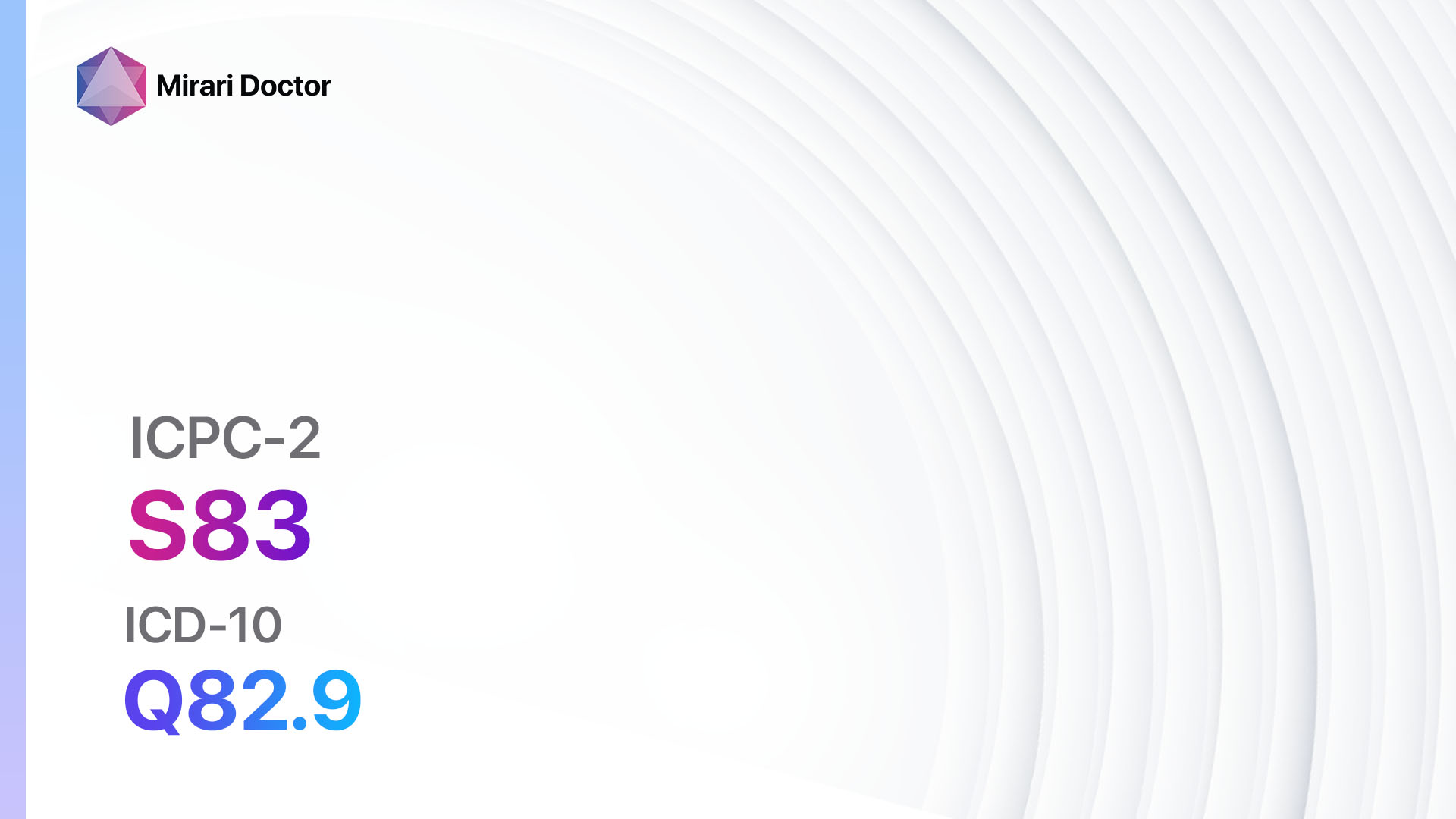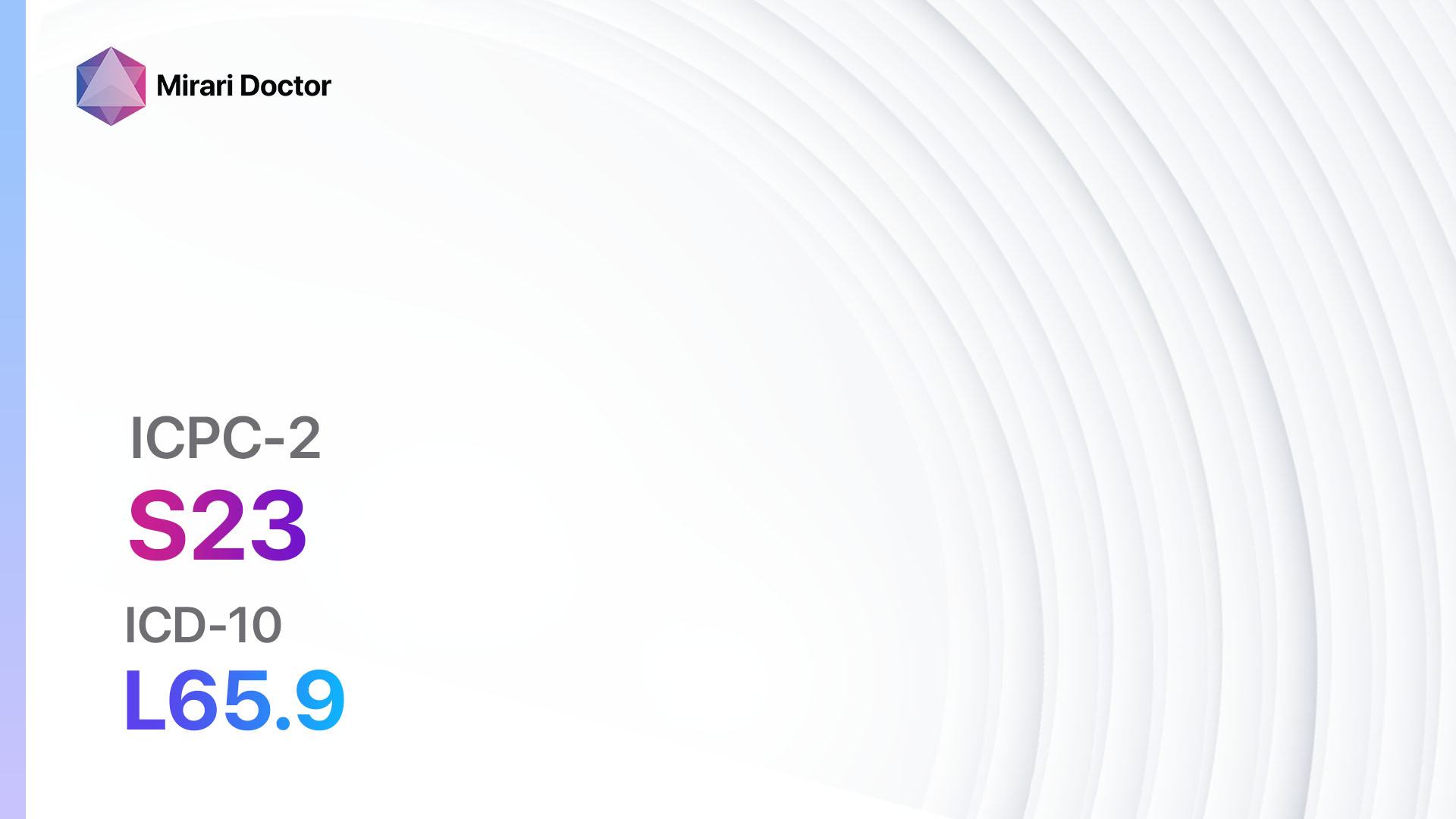
Introduction
Diaper rash is a common condition that affects infants and young children. It is characterized by redness, irritation, and discomfort in the diaper area[1]. The aim of this guide is to provide healthcare professionals with a comprehensive approach to diagnosing and managing diaper rash.
Codes
Symptoms
- Redness and inflammation in the diaper area[4]
- Irritation and discomfort[5]
- Rash may be raised or have small red bumps[6]
- Skin may appear chapped or scaly[7] Rash may spread to the thighs, genitals, or lower abdomen[8]
Causes
- Prolonged exposure to wet or soiled diapers[9]
- Friction from rubbing against the diaper[10]
- Irritation from chemicals in diapers or wipes
- Yeast or bacterial infection
- Allergic reaction to diaper materials or laundry detergents
Diagnostic Steps
Medical History
- Gather information about the duration and severity of the rash
- Ask about the frequency of diaper changes and use of diaper creams or ointments
- Inquire about any recent changes in diaper brand, laundry detergent, or other products used in the diaper area
- Assess for any signs of infection, such as fever or pus-filled blisters
Physical Examination
- Inspect the diaper area for redness, inflammation, or rash
- Look for signs of infection, such as open sores or blisters
- Assess the severity of the rash and any associated symptoms, such as itching or pain
Determine Severity
- Mild: Redness and irritation limited to the diaper area
- Moderate: Widespread redness and inflammation, with some discomfort
- Severe: Intense redness, swelling, and pain, with possible open sores or blisters
Laboratory Tests
- Usually not necessary for diagnosing diaper rash
- Consider a fungal culture if a yeast infection is suspected
Diagnostic Imaging
- Not applicable for diagnosing diaper rash
Other Tests
- Not applicable for diagnosing diaper rash
Follow-up and Patient Education
- Schedule a follow-up visit to assess the progress of the rash and adjust treatment if necessary
- Educate parents or caregivers about proper diaper hygiene, including frequent diaper changes and gentle cleaning of the diaper area
- Provide information on the use of diaper creams or ointments to protect the skin and promote healing
Possible Interventions
Traditional Interventions
Medications:
Top 5 drugs for Diaper rash:
- Zinc oxide cream:
- Cost: $5-$10 for a 4 oz tube.
- Contraindications: Hypersensitivity to zinc oxide.
- Side effects: Rare, but may include skin irritation or allergic reaction.
- Severe side effects: None reported.
- Drug interactions: None reported.
- Warning: Avoid contact with eyes or mouth.
- Hydrocortisone cream:
- Cost: $5-$15 for a 1 oz tube.
- Contraindications: Hypersensitivity to hydrocortisone.
- Side effects: Rare, but may include skin thinning or discoloration.
- Severe side effects: None reported.
- Drug interactions: None reported.
- Warning: Do not use on open sores or infected skin.
- Antifungal cream (e.g., clotrimazole):
- Cost: $5-$10 for a 1 oz tube.
- Contraindications: Hypersensitivity to clotrimazole.
- Side effects: Rare, but may include skin irritation or allergic reaction.
- Severe side effects: None reported.
- Drug interactions: None reported.
- Warning: Do not use on open sores or infected skin.
- Antibacterial ointment (e.g., bacitracin):
- Cost: $5-$10 for a 1 oz tube.
- Contraindications: Hypersensitivity to bacitracin.
- Side effects: Rare, but may include skin irritation or allergic reaction.
- Severe side effects: None reported.
- Drug interactions: None reported.
- Warning: Do not use on open sores or infected skin.
- Barrier cream (e.g., petroleum jelly):
- Cost: $3-$10 for a 4 oz jar.
- Contraindications: Hypersensitivity to petroleum jelly.
- Side effects: Rare, but may include skin irritation or allergic reaction.
- Severe side effects: None reported.
- Drug interactions: None reported.
- Warning: None.
Alternative Drugs:
- Calendula cream: Natural remedy with anti-inflammatory properties. Cost: $5-$15 for a 1 oz tube.
- Coconut oil: Natural moisturizer with antimicrobial properties. Cost: $5-$10 for a 16 oz jar.
- Aloe vera gel: Soothes and hydrates irritated skin. Cost: $5-$10 for a 4 oz bottle.
- Oatmeal bath: Relieves itching and inflammation. Cost: $5-$15 for a 1 lb container.
- Probiotic cream: Promotes healthy skin flora. Cost: $10-$20 for a 1 oz tube.
Surgical Procedures:
- Not applicable for treating diaper rash.
Alternative Interventions
- Warm water baths with baking soda: Helps soothe and cleanse the diaper area. Cost: $5-$10 for a box of baking soda.
- Air drying: Allows the skin to breathe and promotes healing. Cost: Free.
- Cloth diapers: May reduce the risk of diaper rash compared to disposable diapers. Cost: Varies depending on the brand and quantity.
- Avoiding irritants: Use fragrance-free diapers, wipes, and laundry detergents. Cost: Varies depending on the products chosen.
- Changing diapers frequently: Helps keep the diaper area clean and dry. Cost: Free.
Lifestyle Interventions
- Loose-fitting diapers: Allows for better air circulation and reduces friction. Cost: Varies depending on the brand and quantity.
- Diaper-free time: Allows the skin to breathe and reduces moisture. Cost: Free.
- Gentle cleaning: Use warm water and a soft cloth or cotton ball to clean the diaper area. Cost: Free.
- Patting dry: Gently pat the skin dry instead of rubbing. Cost: Free.
- Avoiding tight clothing: Helps prevent friction and irritation. Cost: Varies depending on the clothing chosen.
It is important to note that the cost ranges provided are approximate and may vary depending on the location and availability of the interventions.
Mirari Cold Plasma Alternative Intervention
Understanding Mirari Cold Plasma
- Safe and Non-Invasive Treatment: Mirari Cold Plasma is a safe and non-invasive treatment option for various skin conditions. It does not require incisions, minimizing the risk of scarring, bleeding, or tissue damage.
- Efficient Extraction of Foreign Bodies: Mirari Cold Plasma facilitates the removal of foreign bodies from the skin by degrading and dissociating organic matter, allowing easier access and extraction.
- Pain Reduction and Comfort: Mirari Cold Plasma has a local analgesic effect, providing pain relief during the treatment, making it more comfortable for the patient.
- Reduced Risk of Infection: Mirari Cold Plasma has antimicrobial properties, effectively killing bacteria and reducing the risk of infection.
- Accelerated Healing and Minimal Scarring: Mirari Cold Plasma stimulates wound healing and tissue regeneration, reducing healing time and minimizing the formation of scars.
Mirari Cold Plasma Prescription
Video instructions for using Mirari Cold Plasma Device – S89 Diaper rash (ICD-10:L22)
| Mild | Moderate | Severe |
| Mode setting: 1 (Infection) Location: 0 (Localized) Morning: 15 minutes, Evening: 15 minutes |
Mode setting: 1 (Infection) Location: 0 (Localized) Morning: 30 minutes, Lunch: 30 minutes, Evening: 30 minutes |
Mode setting: 1 (Infection) Location: 0 (Localized) Morning: 30 minutes, Lunch: 30 minutes, Evening: 30 minutes |
| Mode setting: 10 (Dermatitis/Fungus) Location: 0 (Localized) Morning: 15 minutes, Evening: 15 minutes |
Mode setting: 10 (Dermatitis/Fungus) Location: 0 (Localized) Morning: 30 minutes, Lunch: 30 minutes, Evening: 30 minutes |
Mode setting: 10 (Dermatitis/Fungus) Location: 0 (Localized) Morning: 30 minutes, Lunch: 30 minutes, Evening: 30 minutes |
| Mode setting: 3 (Antiviral Therapy) Location: 0 (Localized) Morning: 15 minutes, Evening: 15 minutes |
Mode setting: 3 (Antiviral Therapy) Location: 0 (Localized) Morning: 30 minutes, Lunch: 30 minutes, Evening: 30 minutes |
Mode setting: 3 (Antiviral Therapy) Location: 0 (Localized) Morning: 30 minutes, Lunch: 30 minutes, Evening: 30 minutes |
| Total Morning: 45 minutes approx. $7.50 USD, Evening: 45 minutes approx. $7.50 USD |
Total Morning: 90 minutes approx. $15 USD, Lunch: 90 minutes approx. $15 USD, Evening: 90 minutes approx. $15 USD |
Total Morning: 90 minutes approx. $15 USD, Lunch: 90 minutes approx. $15 USD, Evening: 90 minutes approx. $15 USD |
| Usual treatment for 7-60 days approx. $105 USD – $900 USD | Usual treatment for 6-8 weeks approx. $1,890 USD – $2,520 USD |
Usual treatment for 3-6 months approx. $4,050 USD – $8,100 USD
|
 |
|
Use the Mirari Cold Plasma device to treat Diaper rash effectively.
WARNING: MIRARI COLD PLASMA IS DESIGNED FOR THE HUMAN BODY WITHOUT ANY ARTIFICIAL OR THIRD PARTY PRODUCTS. USE OF OTHER PRODUCTS IN COMBINATION WITH MIRARI COLD PLASMA MAY CAUSE UNPREDICTABLE EFFECTS, HARM OR INJURY. PLEASE CONSULT A MEDICAL PROFESSIONAL BEFORE COMBINING ANY OTHER PRODUCTS WITH USE OF MIRARI.
Step 1: Cleanse the Skin
- Start by cleaning the affected area of the skin with a gentle cleanser or mild soap and water. Gently pat the area dry with a clean towel.
Step 2: Prepare the Mirari Cold Plasma device
- Ensure that the Mirari Cold Plasma device is fully charged or has fresh batteries as per the manufacturer’s instructions. Make sure the device is clean and in good working condition.
- Switch on the Mirari device using the power button or by following the specific instructions provided with the device.
- Some Mirari devices may have adjustable settings for intensity or treatment duration. Follow the manufacturer’s instructions to select the appropriate settings based on your needs and the recommended guidelines.
Step 3: Apply the Device
- Place the Mirari device in direct contact with the affected area of the skin. Gently glide or hold the device over the skin surface, ensuring even coverage of the area experiencing.
- Slowly move the Mirari device in a circular motion or follow a specific pattern as indicated in the user manual. This helps ensure thorough treatment coverage.
Step 4: Monitor and Assess:
- Keep track of your progress and evaluate the effectiveness of the Mirari device in managing your Diaper rash. If you have any concerns or notice any adverse reactions, consult with your health care professional.
Note
This guide is for informational purposes only and should not replace the advice of a medical professional. Always consult with your healthcare provider or a qualified medical professional for personal advice, diagnosis, or treatment. Do not solely rely on the information presented here for decisions about your health. Use of this information is at your own risk. The authors of this guide, nor any associated entities or platforms, are not responsible for any potential adverse effects or outcomes based on the content.
Mirari Cold Plasma System Disclaimer
- Purpose: The Mirari Cold Plasma System is a Class 2 medical device designed for use by trained healthcare professionals. It is registered for use in Thailand and Vietnam. It is not intended for use outside of these locations.
- Informational Use: The content and information provided with the device are for educational and informational purposes only. They are not a substitute for professional medical advice or care.
- Variable Outcomes: While the device is approved for specific uses, individual outcomes can differ. We do not assert or guarantee specific medical outcomes.
- Consultation: Prior to utilizing the device or making decisions based on its content, it is essential to consult with a Certified Mirari Tele-Therapist and your medical healthcare provider regarding specific protocols.
- Liability: By using this device, users are acknowledging and accepting all potential risks. Neither the manufacturer nor the distributor will be held accountable for any adverse reactions, injuries, or damages stemming from its use.
- Geographical Availability: This device has received approval for designated purposes by the Thai and Vietnam FDA. As of now, outside of Thailand and Vietnam, the Mirari Cold Plasma System is not available for purchase or use.
References
-
- Cleveland Clinic. Diaper Rash. https://my.clevelandclinic.org/health/diseases/11037-diaper-rash-diaper-dermatitis
- ICPC-2 Code: S89 Diaper rash. RxReasoner. https://www.rxreasoner.com/icpc2codes/S89
- ICD-10 code: L22 Diaper [napkin] dermatitis. gesund.bund.de. https://gesund.bund.de/en/icd-code-search/l22
- Diaper Rash: Symptoms, Causes & Treatment. Cleveland Clinic. https://my.clevelandclinic.org/health/diseases/11037-diaper-rash-diaper-dermatitis
- Diaper Rash: Causes, Symptoms & Diagnosis. Healthline. https://www.healthline.com/health/diaper-rash
- Diaper Rash (for Parents). Nemours KidsHealth. https://kidshealth.org/en/parents/diaper-rash.html
- Diaper Rash: Causes, Types, Symptoms and Treatments. CeraVe. https://www.cerave.com/skin-smarts/skin-concerns/itchy-skin/diaper-rash-causes-types-symptoms-and-treatments
- Diaper rash – Symptoms & causes. Mayo Clinic. https://www.mayoclinic.org/diseases-conditions/diaper-rash/symptoms-causes/syc-20371636
- What Causes Diaper Rash? DESITIN®. https://www.desitin.com/identifying-diaper-rash/what-causes-diaper-rash
- How to treat diaper rash. American Academy of Dermatology. https://www.aad.org/public/everyday-care/itchy-skin/rash/treat-diaper-rash
Related articles
Made in USA



























